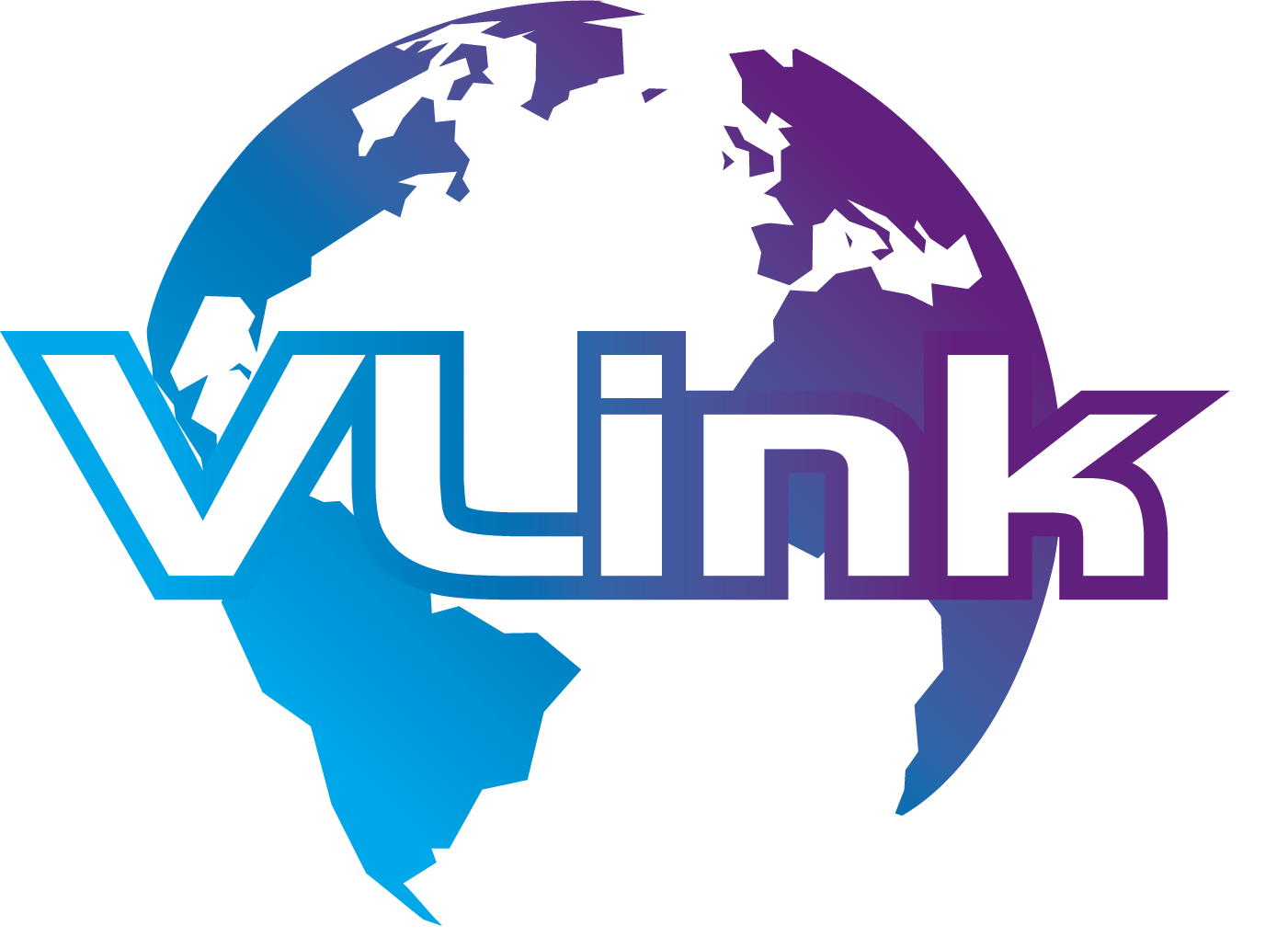What is EHR in Healthcare?
An Electronic Health Record (EHR) system is a digital platform used in healthcare to store and manage patient information, including medical history, diagnoses, treatments, and more. It enhances efficiency, reduces errors, and ensures seamless communication among healthcare providers.
There are two main types of electronic health record systems, both of which are crucial when considering how to build an EHR system:
Physician-Hosted EHR – In this type, patient data is stored on the physician’s servers. The physician is responsible for purchasing and maintaining the hardware and software.
Remotely Hosted EHR – Here, the server is located outside the physician’s office, allowing healthcare providers to focus solely on patient care while an external provider manages the IT infrastructure.
With the growing demand for secure, compliant, and interoperable healthcare solutions, developing a well-structured EHR system has become essential for hospitals, clinics, and medical organizations. This guide will explore the key features, development process, and cost breakdown of building an EHR system.
Benefits of Implementing an EHR System
Let's explore the benefits of the EHR system for three primary stakeholders- businesses, patients and hospitals.
EHR Software Development Benefits for Businesses
Here are the key benefits of electronic health records software development for business:

Improved Efficiency
EHR software boosts efficiency by eliminating paper records and automating tasks like scheduling, billing, and patient tracking. This software saves time, reduces errors, and streamlines workflows, allowing healthcare providers to focus on patient care.
Regulatory Compliance
EHR systems and mHealth software ensure compliance with regulations like HIPAA by offering secure data storage, privacy controls, and regular audits. It minimizes legal risks and fines while safeguarding patient data for businesses.
Better Revenue Management
EHR system streamlines billing and coding, reducing errors and ensuring timely claims. It expedites reimbursements, improves cash flow, and tracks payments, appointments, and patient balances, offering real-time financial insights for businesses.
Different Monetization Options
Like any other system, EHRs offer various monetization models, including subscription-based, freemium (free software with paid features), and pay-per-use options. This flexibility in monetization strategies makes EHR software development a highly lucrative investment.
EHR Software Development for Hospitals
Here are the key benefits of EHR practice management software development for hospitals:
Enhanced Patient Care
EHR systems improve patient care by providing healthcare professionals with comprehensive, up-to-date records. This enables faster diagnosis and informed decisions and reduces medical errors, enhancing overall patient experience and treatment outcomes.
Operational Cost Savings
While EHR practice management development and implementation can be expensive in the short term, it becomes a profitable investment for hospitals in the long run. Reduced healthcare transcription costs, cost-effective record storage, and streamlined claims management contribute to significant savings.
High Security
The development of well-planned EHR software includes various security measures such as automated session termination, digital signatures, encryption, and multifactor authentication. These extensive security features help protect the software from potential hackers.
Improved Patient-Doctor Interactions
EHR systems enable personalized care by providing real-time access to patient records, fostering meaningful doctor-patient conversations. They also support telemedicine, enhancing online consultations and improving overall access to healthcare.
EHR Software Development Benefits for Patients
Here are several benefits of the EHR system for patients:

Easy Access to Health Records
EHR systems provide patients with secure, convenient access to their health records, empowering them to take control of their healthcare.
Preventive Care Adherence
EHR systems help patients stay on track with preventive care schedules, such as vaccinations, screenings, and check-ups, improving long-term health outcomes.
Hospital Readmissions
By improving care coordination and follow-up, EHR systems reduce the likelihood of hospital readmissions, leading to better patient outcomes and lower costs.
Chronic Disease Management
EHR systems allow healthcare providers to monitor and manage chronic conditions more effectively, ensuring timely interventions and better management of health issues.
Medication Errors
EHR systems help reduce medication errors by providing accurate patient data, checking for drug interactions, and ensuring correct prescriptions and dosages.
Key Features of an EHR Software Development
When developing a custom Electronic Health Record (EHR) system tailored to a specific medical facility's needs, the functionalities may vary. However, certain features are standard across most EHR systems. Let's explore the must-have features to build an EHR system:

Document Management
The primary agenda of EHR application development is to support the storage, retrieval, and sharing of patient documents, including medical records, images, and DICOM files. These features help ensure that healthcare providers have easy and immediate access to critical patient information, which in turn helps streamline clinical workflows.
Patient Details
A key feature of any EHR software is the ability to store and manage a patient's data, including full name, address, medical history, allergies, and past diagnoses. This ensures that healthcare providers have a complete and up-to-date view of each patient.
Prescription Management
With the e-prescribing feature, healthcare professionals can now write, store, and manage prescriptions remotely while accessing their patients' medical data, reducing errors and improving patient safety. In contrast, patients can also track their medication history.
Data Access Control
EHR software must have multiple robust access control mechanisms to protect sensitive patient data. These mechanisms ensure that only authorized personnel can access or modify patient data, which is essential for complying with regulations like HIPAA (Health Insurance Portability and Accountability Act).
Appointment Scheduling
An EHR system must have an integrated scheduling module. By allowing both doctors and patients to book, reschedule, and cancel appointments, this module helps optimize clinic workflows, reduce waiting times, and improve patient satisfaction.
Reporting
One of the key features that businesses must integrate when building an EHR system is customizable reporting tools. For practitioners, it helps with a comprehensive overview of the patient's demographics, treatment outcomes or financial data. For patients, it offers a graphical representation of their treatment progress and upcoming appointments.
Labs Integration
Lab integration plays a key role when answering how to build an EHR system. By integrating EHR with test labs, you can quickly exchange data and make faster decision-making. This system improves workflow efficiency, minimizes errors and ensures that both patients and doctors can act on lab results promptly.
Invoicing
Gone are the days when medical care facilities worked on complex invoices, claims, denials, and reports manually. Thanks to the EHR system, the invoicing process is now automated, streamlining financial operations by generating patient bills, tracking payments, and ensuring accurate coding and compliance with insurance requirements.
In addition, modern EHR systems come with payment gateway integration for seamless transactions.
The success of EHR software development depends on two factors - the feature set and the resources (tech stack and development team) behind them. As we have discussed the first element of success, let's explore the tech stack and team requirements for electronic health record development.
Tech Stack and Team Required for EHR Development
A tech stack refers to the collection of technologies, tools, programming languages, and frameworks used by a leading EHR software development company to create an effective and secure Electronic Health Record system. The tech stack is essentially the answer to how to build EHR software, influencing its architecture, data management, security, and overall performance.
Here’s a list of idea tech stacks used in custom EHR software development:

Here is an ideal team required to build a custom EHR system:
- 1 Project Manager
- 1 UI/UX Designer
- 2 Frontend Developers
- 1 Backend Developers
- 1 Android EHR Developer
- 1 iOS EHR Developer
- 1 Database Administrators
- 1 DevOps Engineers
- 2 QA Engineers
Now that we've explored the various operational aspects of how to build an EHR system let's dive into the key steps involved in EHR software development.
Step-by-Step Guide on How to Build an EHR System
Electronic health record (EHR) development is a complex process that involves several phases to ensure the product meets functionality requirements and healthcare compliance and increases patient privacy. Let's explore the step-by-step process of creating EHR software:
Before building a custom EHR solution, an EHR software development company needs to understand market needs and your specific requirements and explore competitors to ensure your product stands out. After validating your app idea, the agency will move on to the design stage.
At VLink, after validating the EHR software idea, our developers take the next step: creating a prototype. In this phase, we first create a list of features, finalize the tech stack, and identify the team needed to build the EHR software. Then, we design an EHR prototype, which offers a basic look and feel of the final product without all the functionalities. A well-designed prototype allows you to identify potential design flaws, assess user interaction, and gather feedback early in the process.
Once the prototype is finalized, our developers create wireframes and user journeys that will be visible in the final electronic health record system.
Next, our experts develop the EHR software, incorporating all finalized features and next-gen technologies such as AI, IoT, Blockchain, ML, and Cybersecurity. We also follow an agile software development approach to ensure faster delivery and real-time quality checks of every module.
After development, we thoroughly test your EHR software using various types of software testing across platforms and networks, ensuring it’s glitch-free and performs optimally.
Once the EHR system is built and tested, we proceed with the release phase. This includes deploying the software, onboarding users, and providing necessary training for healthcare providers to use the system effectively. Post-launch, it's essential to maintain the system through regular updates, bug fixes, and security patches to address evolving threats and user needs.
Things to Consider When Building an EHR Software
While the phases of building an EHR system are straightforward, the process can become complex due to various factors. Here are some key considerations:
Ensuring EHR compliance and obtaining necessary certifications
An EHR system must adhere to multiple compliance standards, including HIPAA, GDPR, CCD, and HL7, along with certifications like ONC-ATCB and EuroRec. Failing to meet these requirements can lead to hefty penalties and expose the system to security vulnerabilities.
Partnering with an experienced EHR software development company ensures robust compliance and fortified security measures.
Developing a mobile-friendly EHR system
With the rise of telemedicine and mobile healthcare solutions, ensuring cross-platform compatibility for both Android and iOS devices is crucial. A mobile-friendly EHR system allows healthcare providers to access patient data on the go, update records in real-time, and improve workflow efficiency. Implementing progressive web apps (PWAs) or native apps enhance usability and responsiveness.
Managing seamless data migration
Migrating patient records from legacy systems to a new EHR platform requires careful data mapping, validation, and security protocols. It is essential to:
- Ensure zero data loss during migration
- Maintain data integrity across platforms
- Implement encryption and backup strategies to prevent breaches
Monitoring and optimizing EHR system performance
The continued success of EHR software depends on tracking its performance. At VLink, our well-optimized EHR system enhances speed, scalability and reliability. Key performance metrics to track include:
- Response time for retrieving patient records
- Server uptime and downtime prevention
- Load balancing to manage high volumes of data access
- ROI calculations
- Monitoring EHR quality
By now, you must have a good understanding of how to build an EHR system for your healthcare business. Now, let’s focus on one crucial element that directly impacts you as an entrepreneur or business leader—making your EHR software HIPAA-compliant.
How to Make Your EHR Software HIPAA Compliant?
To make your EHR software HIPAA compliant, you need to partner with a trusted EHR software development company like VLink. We ensure strong encryption, secure data storage, and access controls. Our EHR developers implement multifactor authentication, audit logs, and HIPAA-compliant cloud hosting.
Our experts also conduct regular risk assessments, staff training, and compliance audits. With us, you can meet all HIPAA requirements, safeguard patient data, and focus on delivering quality healthcare services.
Now, it’s time to explore EHR software development costs.
How Much Does It Cost to Build an EHR System?
The cost of building an electronic health record software relies on several factors, including feature set, development team, region, and the number of platforms. Although these aspects vary from one project to another, some MVP-level features remain the same.
So, let's break down EHR software development cost based on features, tech stacks and team size:
| Phase | Web (Timeframe) | Mobile (Timeframe) |
| Planning & Research | 3-4 weeks | 2-3 weeks |
| UI/UX Design | 4-5 weeks | 3-4 weeks |
| Backend Development | 8-10 weeks | 6-8 weeks |
| Frontend Development | 10-12 weeks | 8-10 weeks |
| Testing & QA | 4-5 weeks | 3-4 weeks |
| Deployment | 3-4 weeks | 2-3 weeks |
| Post-launch Support | Ongoing | Ongoing |
The cost to build a web-based EHR platform ranges from $41,400 to $66,250, while the cost for a mobile EHR platform falls between $55,600 and $95,900. These figures are based on an hourly rate of $48-$75/hour charged by a healthcare software development company.
However, it's important to recognize that the time it takes to implement an EHR system, and the associated costs can vary significantly depending on the specific features included in the software.
The complexity and functionality of the EHR system will determine how long it takes to develop and implement. The advanced version of an EHR system, for example, will differ substantially from the MVP version in terms of features, design, and development time.
Type of EHR System and Estimated Development Costs
The cost of developing an Electronic Health Record (EHR) system can vary greatly depending on the complexity, features, and target users. Below is an estimated cost breakdown based on different types of EHR systems:
| EHR Type | Estimated Cost |
| Basic EHR System | $50,000 – $100,000 |
| Mid-Level EHR System | $100,000 – $300,000 |
| Enterprise-Level EHR System | $300,000 – $700,000+ |
Core Features & Functionalities and Associated Costs
The core features integrated into an EHR system also influence its development cost. Below are the estimated costs for key functionalities:
| Core Feature | Estimated Cost |
| Patient Records Management | $10,000 – $50,000 |
| Appointment Scheduling | $5,000 – $15,000 |
| e-Prescriptions | $10,000 – $30,000 |
| Telemedicine Integration | $20,000 – $50,000 |
| HIPAA & GDPR Compliance | $15,000 – $50,000 |
| Interoperability & Data Exchange | $30,000 – $100,000 |
Some of the advanced features that can elevate an EHR system beyond the MVP version include:
- Auto-scheduling: Automated appointment scheduling based on doctor availability and patient preferences.
- Vendor Selection: Integration with third-party vendors for lab results, prescriptions, and other services.
- Customer Relationship Management (CRM): Tools to manage patient communication, appointments, feedback, and more.
- Next-gen Technology Integration: Incorporating machine learning, blockchain and AI in healthcare to optimize decision-making, enhance data security, and improve patient outcomes.
These advanced features can significantly impact the cost of developing the system. The cost implications can be broken down as follows:
- MVP-level EHR Cost Range: $40,000 - $95,000
- Advanced-level EHR Cost Range: $48,000 - $110,000
As your needs evolve, these features can take your EHR system from a basic version to an advanced solution tailored to the specific demands of modern healthcare environments.
Common Challenges in EHR Software Development and How to Overcome Them
When considering how to build EHR software, several challenges can ensure the smooth development and implementation of EMR software. Let's explore common challenges and their potential solutions, ensuring alignment with EHR functional requirements.

1. Regulatory Compliance
EHR systems must comply with stringent healthcare regulations such as HIPAA (Health Insurance Portability and Accountability Act) in the U.S. These regulations ensure that patient data is handled securely and that health records are maintained accurately.
Solution: To overcome this challenge, it is essential to integrate compliance checks into the development process. Collaborate with legal and compliance experts to stay updated with changes in laws. Additionally, use frameworks and libraries that are designed to support regulatory standards, and regularly audit the system for compliance.
2. Interoperability Issues
One of the biggest challenges in EHR software development is ensuring that the software can communicate seamlessly with other healthcare systems, such as laboratory systems, pharmacy software, and insurance platforms. Without effective interoperability, healthcare providers may struggle to access critical patient information in real time.
Solution: Implement standardized protocols like HL7 (Health Level 7) and FHIR (Fast Healthcare Interoperability Resources) to facilitate smooth data exchange across different platforms. Also, prioritize API-first development to allow for easier integration with other systems and future updates.
3. Data Security and Privacy
Healthcare data is highly sensitive, and a breach can have serious consequences, including legal issues and a loss of patient trust. Ensuring the protection of patient data is paramount in EHR software development.
Solution: Incorporate robust encryption protocols, both for data at rest and data in transit. Additionally, implement access control mechanisms such as multifactor authentication (MFA) and audit trails to track who accesses the data. Regular vulnerability testing and penetration testing are also crucial to identifying and addressing potential security gaps.
4. Integration with Legacy Systems
Many healthcare institutions still rely on older systems that may not be compatible with modern EHR solutions. Migrating from or integrating with these legacy systems can be a complex and time-consuming task.
Solution: Develop a flexible and modular system architecture that can integrate with various legacy systems through middleware or custom adapters. In some cases, it might be necessary to work with the healthcare provider to gradually transition from legacy systems to modern EHR solutions, ensuring minimal disruption to patient care.
By addressing these common challenges effectively, EHR software can be developed to meet both functional requirements and compliance standards, leading to successful implementation and enhanced healthcare delivery.
Partner With VLink for Your EHR Software Development Project!
VLink is a trusted EHR software development company backed by a dedicated team of developers who are well-versed in healthcare compliance and regulations. We specialize in creating efficient EHR systems that adhere to all necessary standards. What sets us apart in the healthcare software industry is our deep expertise in developing cutting-edge EHR solutions using the right technology stack.
How do I build an EHR system? With the perfect combination of skills and technological expertise, we’re equipped to help you develop a future-proof EHR system for your healthcare organization—ensuring high security, scalability, and interoperability. All you need to do is reach out to our team of healthcare experts and begin your EHR development journey today.










 Shivisha Patel
Shivisha Patel
















